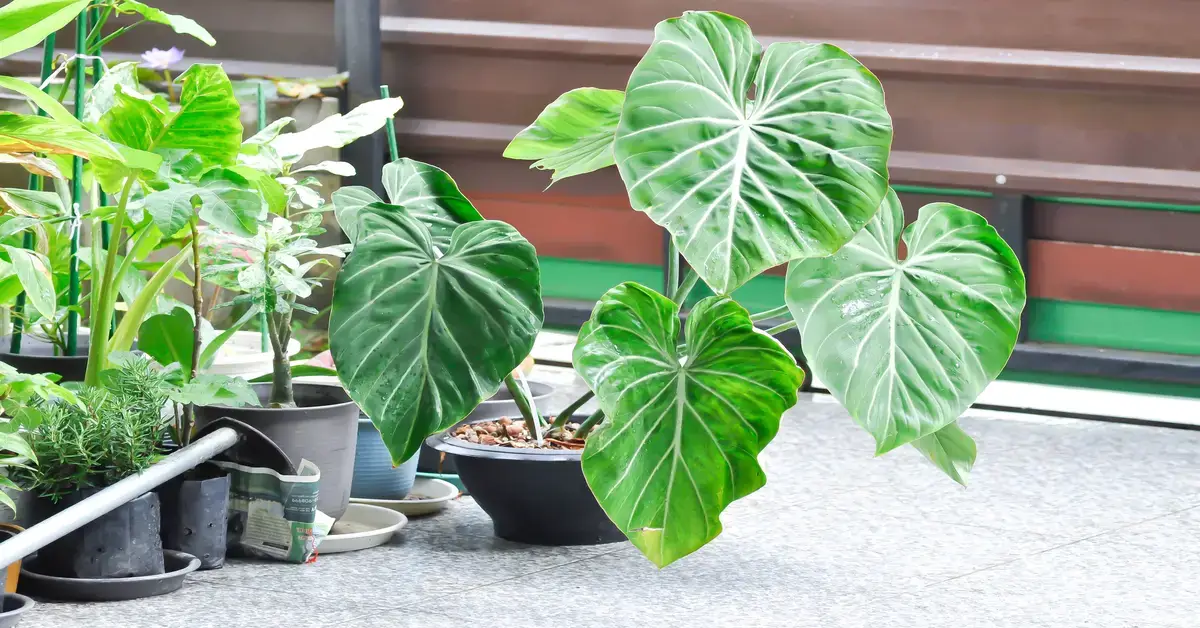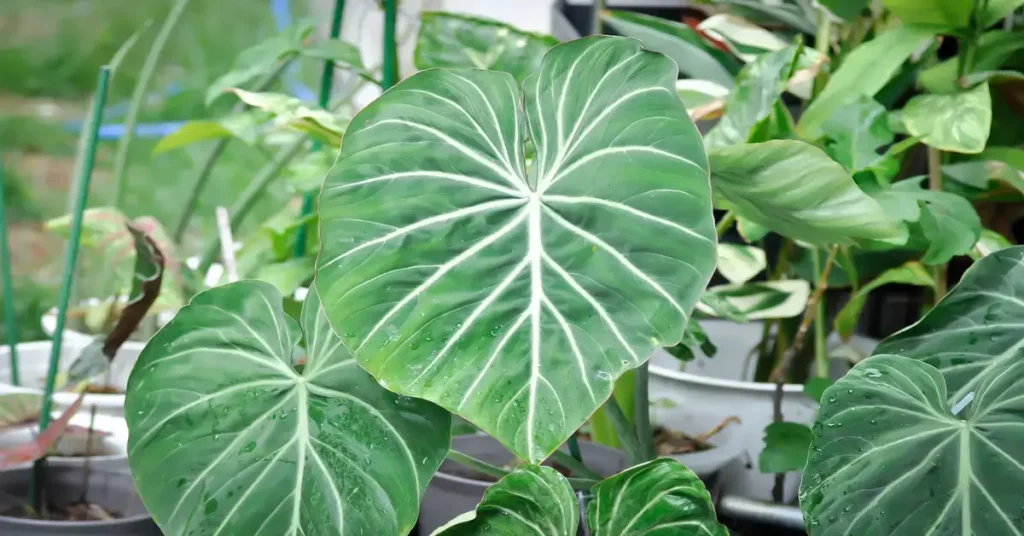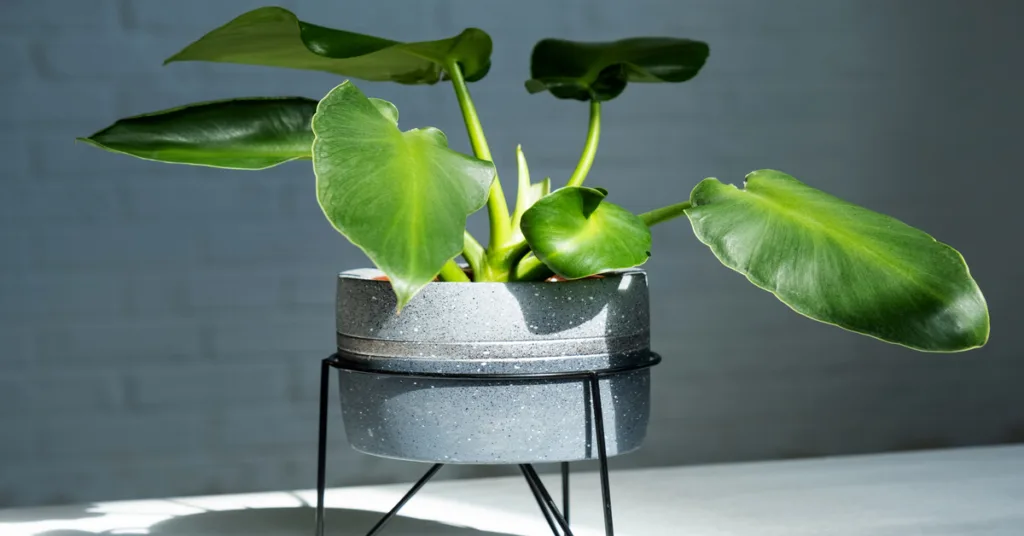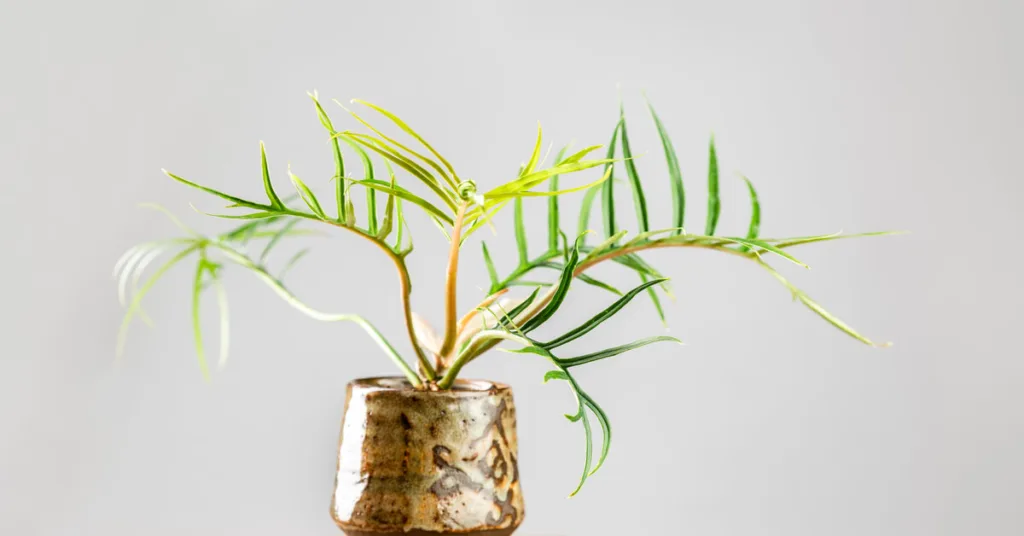The Philodendron Gloriosum is a captivating and elegant choice for plant lovers in indoor plant care. Known for its large, heart-shaped leaves and slow-growing nature, this terrestrial plant adds a touch of tropical sophistication to any indoor space. Originating from the rainforests, it thrives under specific conditions that mimic its natural habitat.
This guide offers practical and easy-to-follow care tips, ensuring even beginners can nurture this beautiful plant indoors. From understanding its need for well-draining soil to mastering the proper watering technique, we cover all the essentials.
Quick Takeaway
For a quick guide on caring for a Philodendron Gloriosum:
- Soil: Use well-draining, rich organic soil; add perlite for better drainage.
- Watering: Keep the soil moist, allowing the top few inches to dry before watering again.
- Light: Provide bright indirect light; avoid direct sun exposure.
- Humidity and Temperature: Maintain high humidity (around 60% or more) and warm temperatures (65°F to 80°F).
- Fertilizing: Use a balanced fertilizer monthly during the growing season.
- Repotting: Repot every 2-3 years or when the plant outgrows its pot, ideally in spring.
- Propagation: Propagate through stem cuttings in water or soil.
- Pruning: Regularly remove yellow or damaged leaves.
- Pests and Diseases: Watch for signs of root rot, spider mites, and aphids, and treat them promptly.
- Toxicity: Avoid pets and children; the plant is toxic if ingested.
Philodendron Gloriosum Care

Soil Requirements
The foundation of Philodendron Gloriosum care begins with selecting the right soil mixture. This plant flourishes in a well-draining potting mix, which is crucial to avoid the risk of root rot. The ideal soil should be rich in organic matter, providing the necessary nutrients for growth. Incorporating elements like perlite into the mix enhances drainage, ensuring the roots remain healthy.
For the best results, the soil should retain enough moisture to keep it slightly moist yet allow excess water to escape easily. This balance is critical in preventing the soil from becoming overly saturated and harming the plant.
Watering Needs
Watering is a crucial aspect of Philodendron Gloriosum care. This plant prefers its soil mixture to remain moist but not waterlogged. The key is to allow the top few inches of soil to dry out before watering again. This practice helps to prevent overwatering, which can lead to root rot, a common issue in indoor plant care.
The frequency of watering may vary depending on the environment. The plant may need more frequent watering during the growing season, typically in spring and summer. However, in the cooler months, reduce the frequency as the plant’s water requirements decrease. Always check the soil moisture level before watering to ensure you provide the right amount to keep the plant healthy and hydrated.
Lighting Conditions
Lighting plays a significant role in the growth and health of the Philodendron Gloriosum. This tropical plant thrives in bright indirect light, which closely resembles the dappled sunlight of its natural rainforest habitat. Too much direct sun can scorch the leaves, while insufficient light can hinder growth and cause the leaves to lose their vibrancy.
For optimal growth, position your Philodendron Gloriosum where it receives indirect light, such as near a window with sheer curtains or in a room with ample ambient light. If natural light is limited, a grow light can be an effective supplement to ensure your plant gets enough sunlight. This careful balance in lighting helps maintain the lush, green appearance of the Philodendron Gloriosum’s leaves, contributing to its overall health.
Humidity and Temperature
Maintaining the humidity level and temperature is vital for the Philodendron Gloriosum, reflecting its tropical plant origins. This foliage plant thrives in high-humidity environments, ideally around 60% or higher. To increase humidity, especially in drier indoor conditions, use a humidifier or place the plant on a pebble tray filled with water. Regular misting can also help, but do it sparingly to prevent leaf issues.
The Philodendron Gloriosum prefers a warm and stable environment. Keep the temperature between 65°F and 80°F (18°C to 27°C). Avoid placing the plant in areas with cold drafts or sudden temperature fluctuations, as these can stress the plant and affect its growth.
Fertilizing
This slow-growing Philodendron Gloriosum plant benefits from a balanced, water-soluble monthly fertilizer to support its development. Following the recommended dosage is essential to prevent over-fertilization, which can lead to yellow leaves and potentially damage the plant.
During the cooler months, you can reduce the frequency of fertilization as the plant’s growth naturally slows down. Whether opting for organic or synthetic fertilizers, the goal is to provide your Philodendron Gloriosum with the proper nutrients to encourage healthy growth, particularly for new leaf development.
Repotting
Repotting is essential in Philodendron care, usually necessary every two to three years or when the plant outgrows its current pot. This process provides fresh soil and more space for the roots, which is essential for your plant’s continued health and growth. The best time for repotting is spring, the beginning of the plant’s active growing season.
Please choose a new pot slightly larger than the current one, ensuring it has adequate drainage to prevent water accumulation. Carefully remove the plant from its pot, inspect and gently clean the roots, and place it in the new pot with fresh, well-draining potting mix. After repotting, water the plant to help settle the soil around the roots and reduce transplant shock.
Propagating
Propagating is a rewarding way to expand your indoor plant collection. The most common method for propagation is through stem cuttings. Choose a healthy stem with at least one node (the point where leaves attach to the stem) and a few leaves. Cut just below a node using clean, sharp scissors or a knife.
Place the cutting in water or directly into a moist soil mixture. If using water, change it regularly to keep it clean, and wait for roots to develop before transplanting into soil. Keep the soil moist for propagation, and place the pot in a warm area with bright indirect light. Root development can take several weeks, so patience is key.
Once the roots are established, your new plant can be treated as a mature Philodendron Gloriosum, following the same care guidelines as the mother plant.
Pruning
Pruning is essential in caring for Philodendron Gloriosum, especially to maintain its appealing aesthetics and encourage healthy growth. Regularly inspect the plant for yellow leaves or any signs of damage. Pruning these leaves enhances the appearance of your indoor plant and promotes the growth of new foliage.
Use clean, sharp shears for pruning, cutting close to the base of the stem to avoid leaving stubs that can rot. This process should be done sparingly, focusing on removing only the necessary parts of the plant. Pruning is best done in the spring or summer, aligning with the plant’s natural growth cycle.
Diseases and Pests
Philodendron Gloriosum, like many houseplants, can be susceptible to certain diseases and pests. The most common issue is root rot, typically caused by overwatering and poor drainage. Symptoms include soft, brown roots and yellowing leaves. To prevent this, ensure your potting mix dries out slightly between waterings, and use pots with good drainage.
Pests like spider mites, aphids, and mealybugs can also infest your plant. These pests are usually found on the leaves’ underside or stem joints. They can cause the leaves to turn yellow and drop prematurely. Regularly inspect your plant for these pests and treat infestations promptly with insecticidal soap or neem oil.
Toxicity
It’s essential to be aware of the toxicity of Philodendron Gloriosum, especially in households with pets or small children. This plant contains calcium oxalate crystals, which can be harmful if ingested. Ingestion can cause irritation of the mouth and throat, difficulty swallowing, and gastrointestinal discomfort.
To ensure safety, keep your Philodendron Gloriosum out of reach of pets and children. Suppose you suspect a pet or child has ingested any plant part. In that case, seeking immediate medical or veterinary attention is advisable. Being mindful of this aspect allows you to enjoy the beauty of the Philodendron Gloriosum while ensuring a safe environment for everyone in your home.
Conclusion
The Philodendron gloriosum is a stunning addition to any house plant collection and easy to care for. By following the guidelines in this plant care and growing guide, you can ensure the health and vibrancy of your plant. As a member of the diverse Philodendron species, the Gloriosum adds unique beauty with its large, heart-shaped leaves. Whether you’re new to plant care or an experienced gardener, the Philodendron Gloriosum is a rewarding choice, bringing a touch of the tropics to your home.



